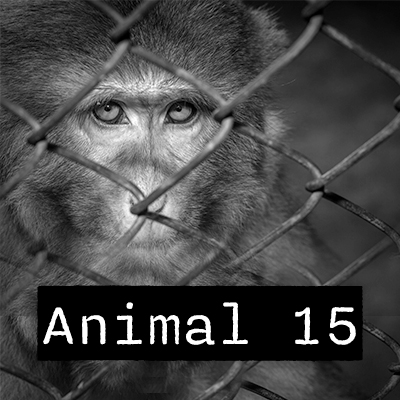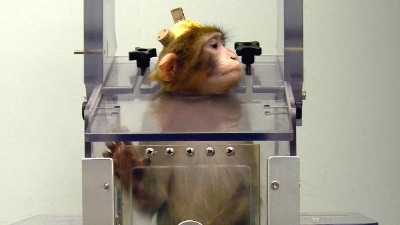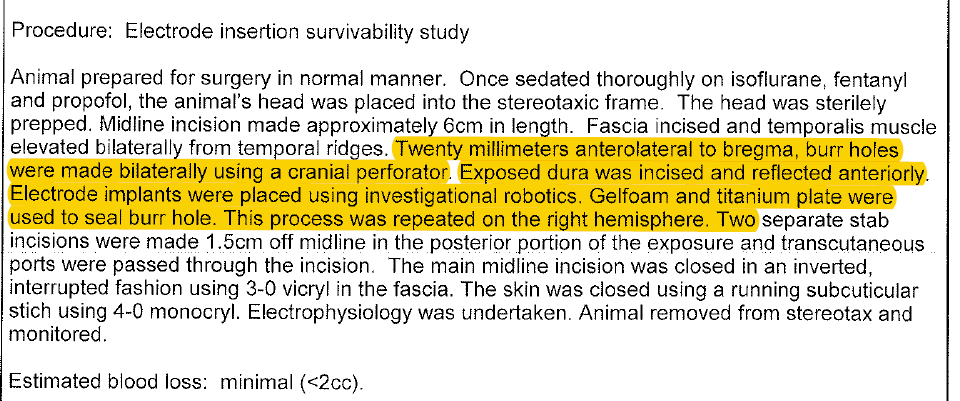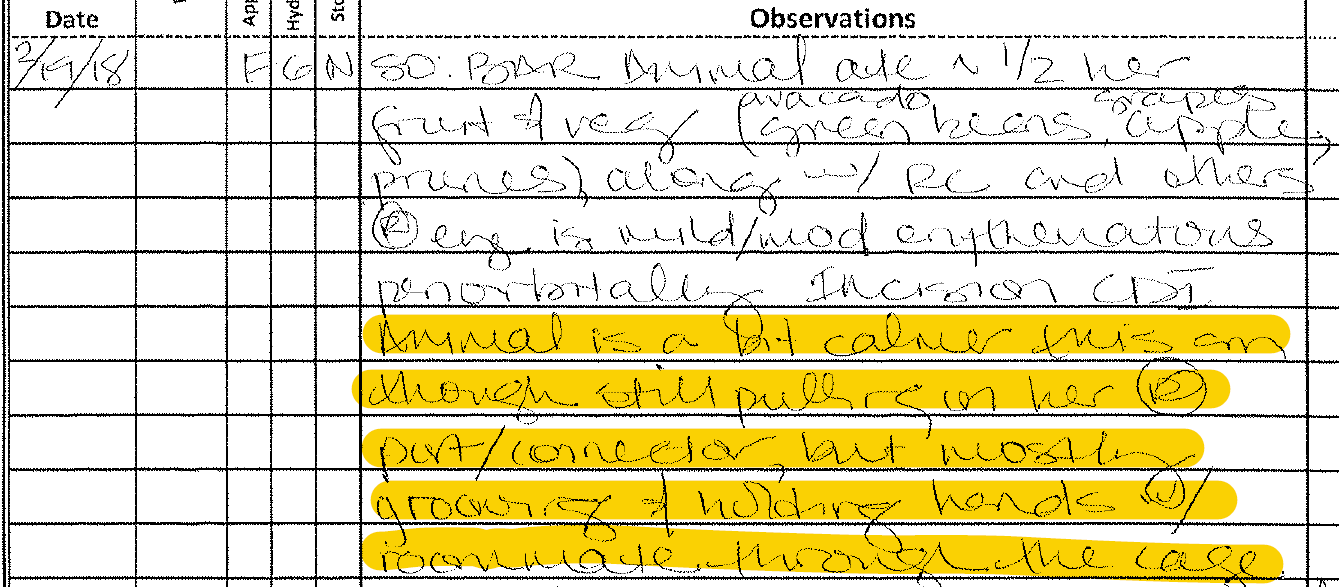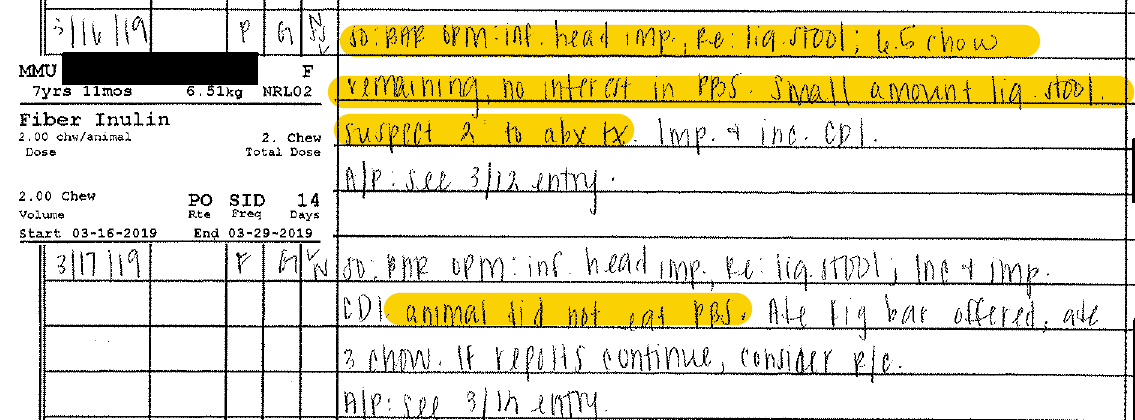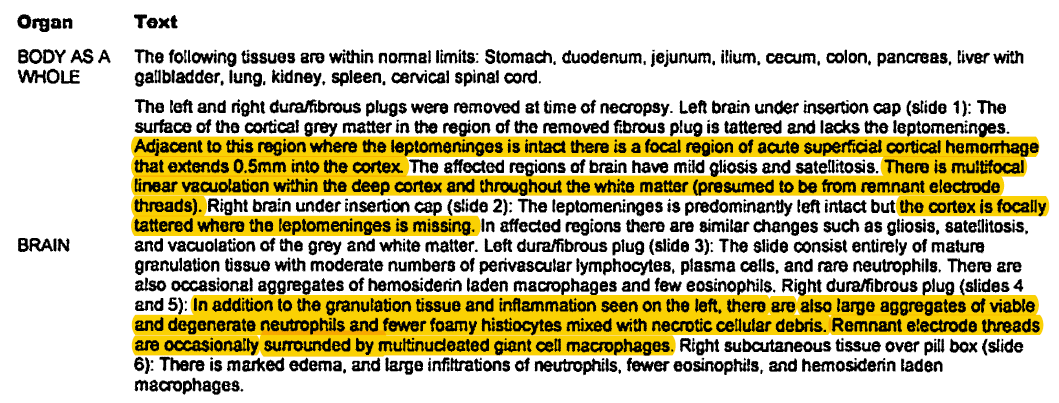Animal 15
Through 2020, Elon Musk’s company Neuralink paid $1.4 million to the University of California, Davis, to use its facilities, where experimenters removed portions of monkeys’ skulls to implant electrodes in the animals’ brains related to the development of a “brain-machine interface.” Only in 2022, following a public records lawsuit by the Physicians Committee for Responsible Medicine, did the troubling details of these experiments begin to come to light. The company is still conducting experiments on animals at its facilities in California and Texas.
This is the story of one monkey, “Animal 15.” She was a macaque who was about 6 years old when she was assigned to the Neuralink experiment in September 2017. In April 2018, she began “task training” where she would be restrained to a chair like the one pictured here.
UC Davis staff wrote on April 7, 2018, that Animal 15 was exhibiting poor appetite, possibly as a result of the restraint and task training.
On June 27, staff noted that Animal 15 had a “trauma” on her left leg.
On Oct. 6, Animal 15 and one other monkey escaped their cages. The next day, staff noted that she was “anxious post-escape,” “unwilling to move into smaller cage for feeding,” and was refusing to eat her food and her treats.
On Oct. 31, staff observed “minor scratches on left cheek.” Then, on Nov. 9, staff noted that she had “face trauma” including an abrasion on “right side of nose/cheek just below right eye.”
On Dec. 17, Neuralink staff drilled holes into Animal 15’s skull, removed part of her skull and skin to expose her brain, and implanted two electrodes, one in each hemisphere of her brain. The surgery lasted 5 hours.
The following day, staff noted that Animal 15 had “excessive itching” despite being given Benadryl. She also had “mild bloody / clear discharge” near the head implants and was “picking or even pulling at right port” in her head.
On Dec. 19, Animal 15 was “still pulling on her right port/connector” in her head. She was also “grooming & holding hands w/roommate through the cage.”
Staff also noted that Animal 15 was “laying down at the front of the cage to hold hands with and groom visual buddy.”
On Dec. 19, staff observed Animal 15 “head pressing,” which can be a sign of neurological impairment or head pain, possibly from the Neuralink implant. In a 10-minute period, staff observed her in “position w/head down on floor multiple times.”
During observation, staff noted that the “animal shook her head 3 times and lost her balance, twice completely falling.” They also wrote that she “[a]ppears ataxic,” meaning she had lost coordination and balance. Staff wrote that it could have been “intracranial swelling” from the Neuralink device or procedure.
A UC Davis veterinarian observed Animal 15 laying down and trying to “hold hands w/roommate.”
On Dec. 21, four days after Neuralink implanted the device in he rbrain, Animal 15 was shivering, scratching, and picking and pulling at her head implant. Staff also noted she had a visible “excoriation” on her right inner leg, meaning she had been picking at it.
Because of “pulling on implant repeatedly” and other signs of anxiety and discomfort, staff started Animal 15 on diazepam (Valium).
On Dec. 22, Animal 15 was still observed “aggressively picking” at her incision on her head where the Neuralink device was implanted. She was also seen with “excoriations” on her face, shoulder, and neck.
On Dec. 24, UC Davis staff wrote that Animal 15’s “face and back of head” were swollen, with her right eye “swollen halfway shut.” She was also “consistently scratching implants and picking” and was observed shaking.
On Christmas Day 2018, Animal 15 was still seen pulling and picking at the implants and incision sites. Additionally, both her eyes were now swollen half-shut, and her right cheek appeared “more swollen than on 12/24.”
On Dec. 26, Animal 15 was still shivering. Staff moved a heat lamp closer to her cage. Staff wrote that there was a concern “regarding a [cranial] screw in or near a muscle causing potential irritation.”
On Dec. 27, Animal 15 was still shivering. Staff noted that her shaking was occurring “only as doors open & new personnel walk in” so this was “thought to be a stress response” to seeing lab workers.
On Dec. 28, staff wrote again that Animal 15’s shivering was a “stress response to some personnel coming into the room or close to her.”
On Jan. 4, 2019, staff immobilized Animal 15 with ketamine so that they could hook the implants in her head to wires and record her brain activity.
On March 8, staff noted that Animal 15 had “cloudy discharge” near her cranial implants. She was sedated so her head implant could be cleaned. Lab tests confirmed that the implant was positive for staphylococcus as well as another type of bacterial infection.
On March 12, Animal 15 was noted to have a “large amount of purulent [discharge]” over her left implant. She was put on antibiotics for the infected implant. Because these antibiotics can cause severe diarrhea, she was also given probiotic sandwiches.
Over the next week, staff noted that Animal 15’s implants were still infected and she had liquid stool and a poor appetite. She was given several antibiotics. Lab staff wrote that she had “no interest in [probiotic sandwich].”
On March 20, faced with Animal 15’s declining condition and her persistent cranial implant infection, staff scheduled her euthanasia for the following day.
On March 21, Animal 15 was euthanized. A necropsy found that the Neuralink implants left parts of Animal 15’s brain “focally tattered,” that “remnant electrode threads” were found in her brain, and there were indications of hemorrhaging.

